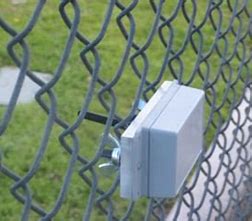Fencing Business Solutions: Pioneering Advancements in the Ever-Evolving Landscape
The fencing industry is witnessing a revolution driven by innovative business solutions that are transforming the way fences are designed, installed, and maintained. With advancements in technology and changes in consumer preferences, fencing companies are adapting to meet the evolving demands of customers. In this blog post, we will explore some of the key dynamics and advancements within the fencing sector, uncovering how these business solutions are redefining the industry.
Fencing Design and Customization
Gone are the days of cookie-cutter fences. Thanks to advancements in technology, fencing businesses are now able to offer an array of design options and customization features to suit individual preferences. Computer-aided design (CAD) software has revolutionized the industry, enabling customers to visualize their fence designs before the installation process even begins. This not only enhances customer satisfaction but also streamlines the overall production process for fencing companies.
Moreover, the introduction of 3D printing has opened up a world of possibilities in fence design. Fencing businesses can now create intricate patterns, textures, and shapes that were once only imaginable. This level of customization allows customers to add a personal touch to their fences, making them not just functional but also aesthetically pleasing.
Automated Installation Processes
Traditionally, fence installation required manual labor and was time-consuming. However, businesses in the fencing sector are now leveraging automation technologies to improve the installation process, reducing both time and costs. Automatic post-drivers, for example, have significantly expedited the process of setting fence posts, increasing efficiency and precision.
Additionally, robotic systems are being developed to automate the entire installation process. These systems use advanced algorithms and sensors to identify the terrain, measure distances accurately, and adjust fence components accordingly. By reducing human intervention, fencing businesses can complete projects more quickly while ensuring a higher level of accuracy and consistency.
Smart Maintenance Solutions
Innovation is not limited to the fence installation phase; maintenance processes have also evolved significantly in recent years. Smart maintenance solutions, enabled by the Internet of Things (IoT), are transforming how fences are monitored and serviced. IoT-enabled sensors can detect faults, damages, or even attempted breaches, instantly alerting both the fencing company and the property owner. This real-time monitoring ensures timely repairs and enhances the security provided by fences.
In addition to monitoring, predictive maintenance is becoming increasingly prevalent within the industry. By analyzing data collected from sensors, machine learning algorithms can anticipate potential issues and recommend proactive maintenance measures. This not only minimizes downtime but also prolongs the lifespan of fences, reducing costs for both customers and businesses.
The fencing industry is undergoing a significant transformation, driven by innovative business solutions that are reshaping every aspect of the sector. From advanced design technologies to automated installation processes and smart maintenance solutions, businesses are embracing new opportunities to meet the evolving demands of customers. These advancements not only enhance the functionality and aesthetics of fences but also improve efficiency, accuracy, and cost-effectiveness.
Looking into the future, we can expect even more groundbreaking innovations as technology continues to evolve. Virtual reality applications may enable customers to experience their desired fences in a simulated environment, providing a realistic preview of the final result. Artificial intelligence may also play a more significant role in fence design and optimization, generating optimal solutions based on customer preferences and environmental factors.
In conclusion, the fencing industry is at the forefront of embracing innovative business solutions. As fences become more than just physical barriers but also integral components of smart homes and buildings, the sector is poised to revolutionize the way we think about fencing, security, and aesthetics. Embracing these advancements will undoubtedly allow fencing businesses to prosper in the ever-evolving landscape of the industry.

